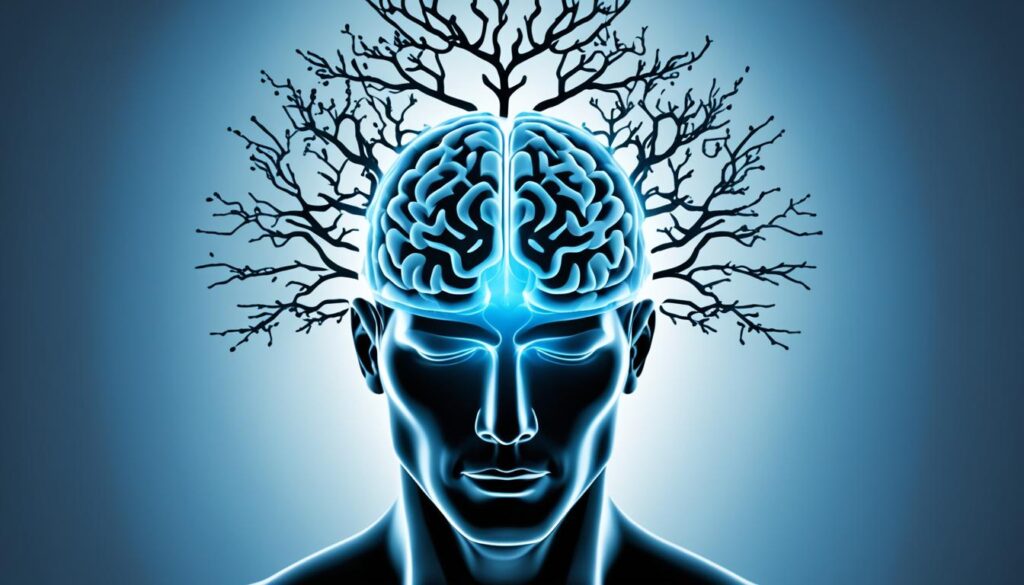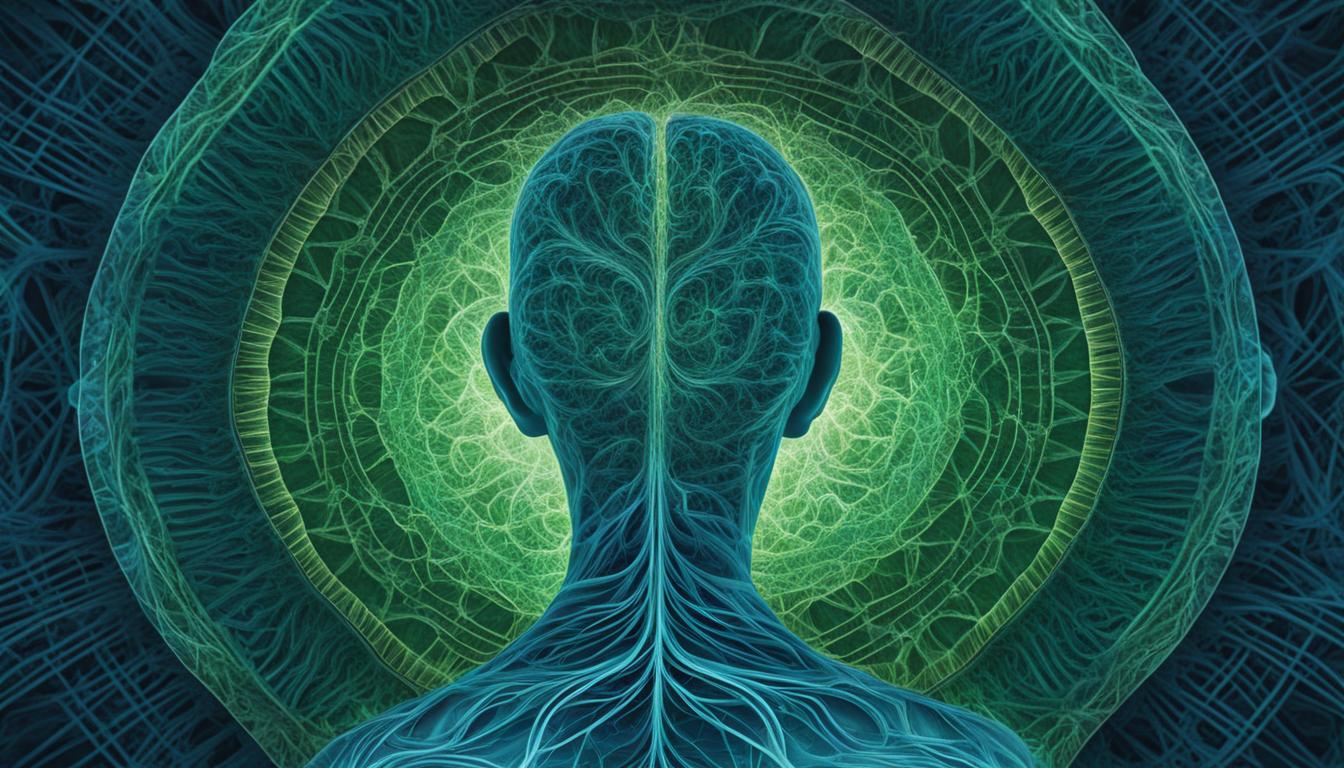Disclosure: This Post Contains Affiliate Links; We earn a commission on purchases.
Chronic pain affects approximately 15 percent of American adults, leading to decreased quality of life and significant healthcare costs. Traditional pain management methods often involve the use of narcotics, which can have negative side effects and risk of addiction. However, research studies have shown that meditation can be an effective tool for alleviating different types of pain. Through mindfulness, guided meditation, and other techniques, individuals suffering from chronic pain have experienced relief and improved well-being. Here, we explore real-life case studies where meditation has been used to successfully manage pain and improve the lives of individuals.
Key Takeaways:
- Meditation is a powerful tool for alleviating different types of pain
- Mindfulness, guided meditation, and other techniques can help individuals with chronic pain
- Case studies demonstrate the effectiveness of meditation in managing pain and improving well-being
- Meditation offers a safe and non-addictive alternative to traditional pain management methods
- Further research is needed to understand the mechanisms of meditation for pain relief
The Prevalence and Impact of Chronic Pain
Chronic pain is a prevalent issue affecting approximately 15 percent of American adults. It can significantly impact a person’s quality of life, leading to missed work days, early retirement, and reduced functionality. Additionally, the cost of chronic pain is staggering, exceeding the combined costs of other major health conditions. It not only includes medical expenditures for pain management but also the indirect costs associated with decreased productivity and disability.
Challenges in Pain Management and the Opioid Epidemic
The management of pain poses numerous challenges in the midst of the ongoing opioid epidemic and the growing concern of prescription drug abuse. Traditional pain management approaches often rely heavily on the use of opioids, which can be effective in relieving pain but also carry significant risks such as addiction and unwanted side effects. This overreliance on opioids has contributed to the widespread crisis of prescription drug abuse in the United States.
The opioid epidemic has had devastating consequences, as the misuse and overprescribing of opioids for chronic pain have led to addiction, overdose, and loss of life. According to the National Institute on Drug Abuse, approximately 2.1 million Americans suffer from substance abuse related to prescription opioids, with an estimated 15,000 deaths due to prescription opioid overdose in 2019 alone.
To combat this crisis, there is an urgent need for alternative methods of pain management that prioritize effectiveness, safety, and non-addictive properties. Healthcare professionals and researchers are exploring various approaches to address these pain management challenges and reduce reliance on opioids.
Understanding the Mechanisms of Meditation for Pain Relief
In recent years, there has been increasing interest in studying the effects of meditation on pain relief. Research has shown that meditation can help reduce the intensity of pain by activating and reinforcing certain areas of the brain involved in pain processing. Additionally, meditation has been found to decrease stress levels, which can contribute to decreased pain perception.
While the exact mechanisms of how meditation works for pain relief are not fully understood, these findings highlight the potential of meditation as a complementary approach to pain management.
One study conducted by Zeidan and colleagues examined the neural mechanisms underlying meditation for pain relief. Participants who underwent a four-day mindfulness meditation training reported lower pain intensity and unpleasantness ratings compared to a control group during the administration of painful heat stimuli. Functional magnetic resonance imaging (fMRI) scans revealed that meditation increased activity in brain regions involved in the cognitive control of pain, such as the prefrontal cortex, while decreasing activity in the somatosensory cortex, a region responsible for processing pain signals. These findings suggest that meditation may modulate pain perception by altering brain activity in pain-related areas.
Another study conducted by Zeidan and colleagues explored the role of mindfulness meditation in decreasing pain sensitivity. Participants who completed a brief training in mindfulness meditation demonstrated reduced pain intensity and lower brain activity in pain-related areas compared to a control group during the application of a painful heat stimulus. The study also found that meditation decreased the activation of the primary somatosensory cortex, a region involved in the initial sensory processing of pain. This suggests that mindfulness meditation may decrease pain sensitivity by modulating the early stages of pain processing.
In addition to its effects on brain activity, meditation has also been shown to reduce stress levels, which can contribute to pain relief. When we experience stress, our body releases stress hormones such as cortisol, which can intensify pain perception. By reducing stress, meditation may help break the cycle of stress-induced pain. A study conducted by Rosenkranz and colleagues demonstrated that individuals who underwent an eight-week mindfulness meditation program had lower cortisol levels and reduced anxiety compared to a control group. This suggests that meditation may decrease stress levels and promote a calmer state of mind, thereby reducing pain sensitivity.
Mechanisms of Meditation for Pain Relief: Summary Table
| Effects of Meditation | Mechanisms |
|---|---|
| Reduced pain intensity | Increase in cognitive control of pain (e.g., prefrontal cortex activation) |
| Decreased pain sensitivity | Lower activity in the somatosensory cortex (processing of pain signals) |
| Stress reduction | Decreased cortisol levels and anxiety |
While the exact mechanisms of meditation for pain relief are still being explored, these studies provide valuable insights into the potential benefits of meditation as a complementary approach to pain management. By activating specific brain regions involved in pain processing and reducing stress levels, meditation offers a promising avenue for alleviating pain and improving overall well-being.
Case Study 1: Sarah Kehoe’s Journey of Pain Management
Sarah Kehoe’s personal pain management journey demonstrates the transformative power of meditation for individuals suffering from chronic pain. Despite trying various conventional pain management methods, Sarah found little relief. Frustrated and desperate for a solution, she turned to meditation as a last resort. Little did she know that this ancient practice would change her life.
Through regular meditation practice, Sarah experienced a significant reduction in her back pain intensity. The calming effects of meditation allowed her to find solace amidst the constant discomfort. As she delved deeper into her meditation practice, Sarah noticed improvements in other aspects of her life as well. The stress and anxiety that often accompany chronic pain began to dissolve, leaving her feeling more balanced and at peace.
Meditation has been my lifeline in my battle against chronic pain. It has given me the strength to face each day with resilience and a renewed sense of hope. I never thought something as simple as sitting in silence could be so powerful. It’s truly a gift.
Sarah’s excellent response to meditation showcases the potential of this practice in managing chronic pain. By focusing on breath awareness, body scans, and visualization techniques, Sarah cultivated a deeper connection with her body and its healing abilities. Through meditation, she discovered the importance of self-compassion and learned to listen to her body’s needs, contributing to her overall well-being.
Sarah’s journey is a testament to the effectiveness of meditation for back pain relief and its ability to improve the lives of individuals suffering from chronic pain. By incorporating meditation into their pain management routines, individuals like Sarah can experience profound shifts in their physical and emotional well-being, paving the way for a better quality of life.
Case Study 2: Mindfulness Meditation for Fibromyalgia
Fibromyalgia is a chronic pain condition characterized by widespread pain and tenderness. It affects millions of people, predominantly women, worldwide. The symptoms can be debilitating, causing physical and emotional distress that significantly impacts quality of life.
Research studies have shown that mindfulness meditation can be a valuable tool for individuals with fibromyalgia, offering pain relief and enhancing overall well-being. Mindfulness meditation involves focusing attention on the present moment, non-judgmentally, and accepting one’s sensations, thoughts, and emotions without resistance or attachment.
Multiple studies have demonstrated the effectiveness of mindfulness meditation for fibromyalgia patients. A randomized controlled trial published in the Journal of General Internal Medicine found that mindfulness meditation reduced pain severity and improved physical and emotional functioning in individuals with fibromyalgia. Participants who practiced mindfulness meditation experienced significant reductions in pain intensity, sleep disturbances, and anxiety, compared to those in the control group.
Another study published in the Journal of Pain Research explored the effects of mindfulness meditation on fibromyalgia patients’ pain perception. The results showed that mindfulness meditation led to decreased pain interference and greater pain acceptance, allowing individuals to cope better with their symptoms and improve their overall quality of life.
It is believed that mindfulness meditation benefits fibromyalgia patients by increasing self-awareness and acceptance, enhancing emotional regulation, reducing stress, and promoting relaxation. These factors contribute to a reduction in pain severity and an improvement in psychological well-being.
For individuals with fibromyalgia, incorporating mindfulness meditation into their daily routine can be transformative. It empowers them to take an active role in managing their pain and enhances their overall sense of control and well-being.
Case Study: Mindfulness Meditation and Fibromyalgia Relief
“After years of living with chronic pain due to fibromyalgia, I felt like I had tried everything. Medication provided temporary relief, but the side effects were overwhelming. When I discovered mindfulness meditation, everything changed. Regular practice has not only reduced the intensity of my pain, but it has also helped me manage stress and improve my mental health. Mindfulness meditation has given me the power to reclaim my life and find true relief from fibromyalgia.”
– Jane Thompson, Fibromyalgia Patient
**Table: Benefits of Mindfulness Meditation for Fibromyalgia Patients**
| Benefits | Description |
|—————————————|————————————————————————-|
| Pain relief | Mindfulness meditation reduces pain severity and improves pain acceptance. |
| Improved emotional well-being | Meditation enhances emotional regulation and reduces stress and anxiety levels. |
| Better sleep quality | Regular practice helps reduce sleep disturbances commonly experienced by fibromyalgia patients. |
| Increased self-awareness | Mindfulness meditation increases self-awareness and empowers individuals to manage their pain effectively. |
| Enhanced overall quality of life | By promoting relaxation and improving psychological well-being, meditation improves the overall quality of life for fibromyalgia patients. |

Case Study 3: Mindfulness-Based Stress Reduction for Chronic Low Back Pain
Chronic low back pain is a common condition that affects many individuals, causing significant disruptions to their daily lives. Traditional pain management methods, such as opioids, may provide temporary relief, but they come with risks and potential side effects. However, there is a promising alternative approach to pain management – Mindfulness-Based Stress Reduction (MBSR).
MBSR is a non-pharmacological intervention that combines mindfulness meditation, body awareness, and yoga to help individuals manage their chronic pain. By cultivating a state of present-moment awareness and non-judgment, MBSR teaches individuals to redirect their attention from the pain and to focus on the sensations and movements of their bodies. This practice can help reduce pain intensity, alleviate stress, and improve overall well-being.
A study conducted by researchers at the University of Washington examined the effectiveness of MBSR in individuals with chronic low back pain. The participants underwent an 8-week MBSR program that involved weekly group sessions and daily home practice. The results showed that MBSR led to a significant reduction in pain intensity and disability, as well as improvements in physical functioning and quality of life.
| MBSR for Chronic Low Back Pain: Key Findings |
|---|
| Reduction in pain intensity |
| Improvement in physical functioning |
| Enhanced quality of life |
| Decreased disability |
This case study demonstrates the potential of mindfulness-based stress reduction as a non-pharmacological approach to managing chronic low back pain. By incorporating MBSR into their pain management strategies, individuals can experience significant improvements in pain levels, physical functioning, and overall quality of life.
The Science behind Meditation and Pain Relief
Scientific evidence has demonstrated the efficacy of meditation in providing relief from pain and improving overall well-being. Numerous studies have focused on understanding the neural mechanisms through which meditation influences pain perception.
These investigations have revealed that meditation can modulate pain-related brain activity and alter cognitive control and sensory processing. By engaging in meditation practices, individuals can experience a reduction in pain intensity and an enhancement in pain management.
“Meditation has been found to reduce pain-related activity in specific brain areas, leading to decreased pain perception.”
One study conducted by Zeidan et al. (2011) demonstrated that mindfulness meditation significantly reduced pain intensity by engaging the brain’s anterior cingulate cortex, a region of the brain implicated in pain processing. Additionally, meditation has been shown to activate the prefrontal cortex, which helps regulate pain perception and emotional responses to pain.
Another study conducted by Zeidan et al. (2016) observed that meditation effectively reduced pain unpleasantness by activating the orbitofrontal cortex, a brain area involved in the emotional evaluation of pain. This finding suggests that meditation not only reduces the physical sensation of pain but also improves emotional well-being.
Furthermore, meditation has been found to enhance cognitive control over pain. A study conducted by Gard et al. (2012) found that long-term meditation practice improved attention control and decreased pain-related cognitive interference. This indicates that meditation can help individuals redirect their attention away from pain, thereby reducing its impact on daily functioning and quality of life.
By understanding the neural mechanisms through which meditation influences pain perception, researchers and healthcare professionals can develop targeted meditation interventions tailored to specific pain conditions. Through continued scientific investigation, meditation is emerging as a promising and evidence-based approach for pain management and relief.
“The findings of these studies provide scientific support for the use of meditation in pain management and highlight its potential as a complementary therapy.”

Key Takeaways:
- Scientific studies have demonstrated that meditation modulates pain perception through various brain mechanisms.
- Meditation can reduce pain-related activity in specific brain areas and alter cognitive control and sensory processing.
- Activation of the anterior cingulate cortex and prefrontal cortex during meditation has been linked to reduced pain intensity and improved emotional well-being.
- Long-term meditation practice enhances attention control and reduces pain-related cognitive interference.
- Further research is needed to fully understand the mechanisms and optimize the use of meditation for pain relief.
Conclusion
Meditation has emerged as a powerful tool for alleviating different types of pain, ranging from chronic low back pain to conditions like fibromyalgia. Through its various techniques, such as mindfulness and guided meditation, individuals with chronic pain can experience relief and improved quality of life.
While further research is needed to fully understand the mechanisms of meditation for pain relief, the existing evidence suggests its potential as a complementary approach to traditional pain management methods. Meditation has been found to activate and reinforce certain areas of the brain involved in pain processing, while also decreasing stress levels that contribute to pain perception. These findings highlight the transformative power of meditation in managing pain.
By incorporating meditation into their routine, individuals can tap into its benefits and find relief from their pain. Whether it’s practicing mindfulness meditation, following guided meditation for pain relief, or exploring other meditation techniques, individuals have the opportunity to improve their well-being and regain control over their lives.
In conclusion, meditation offers a holistic and non-pharmacological approach to pain management. It provides individuals with a sense of empowerment and mindfulness, allowing them to effectively navigate the challenges of chronic pain. As more research and case studies emerge, it is clear that meditation has the potential to revolutionize the way we address pain, leading to a future where individuals can find relief and healing through the power of their own mind.
Source Links
- https://www.ncbi.nlm.nih.gov/pmc/articles/PMC4941786/
- https://www.theatlantic.com/health/archive/2014/04/treating-chronic-pain-with-meditation/284182/
- https://www.ncbi.nlm.nih.gov/pmc/articles/PMC10739252/
Ryan Conlon is a passionate advocate for mindfulness and meditation, dedicated to helping others discover the transformative power of these practices in their lives. As the founder of Daily Meditation, Ryan’s mission is to provide a sanctuary for individuals seeking peace, clarity, and well-being amidst the chaos of modern life. With a background in psychology and years of personal experience with meditation, Ryan brings a wealth of knowledge and insight to his work. Through Daily Meditation, he shares practical guidance, inspirational content, and expert resources to support others on their journey toward greater mindfulness, resilience, and inner peace.
Subscribe to Our Newsletter
















